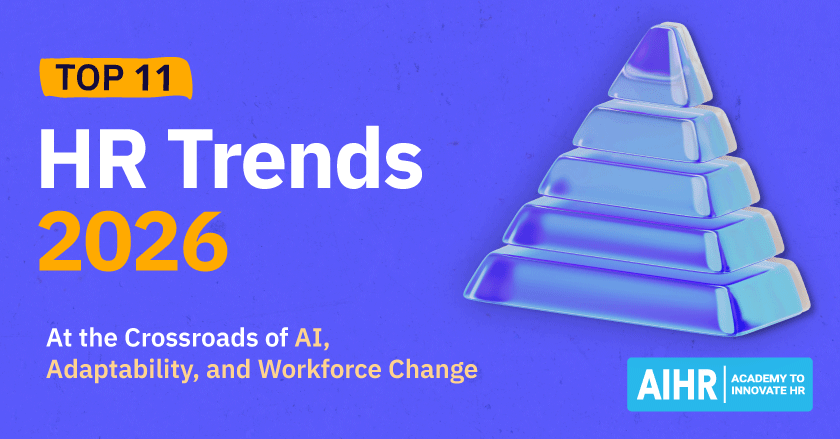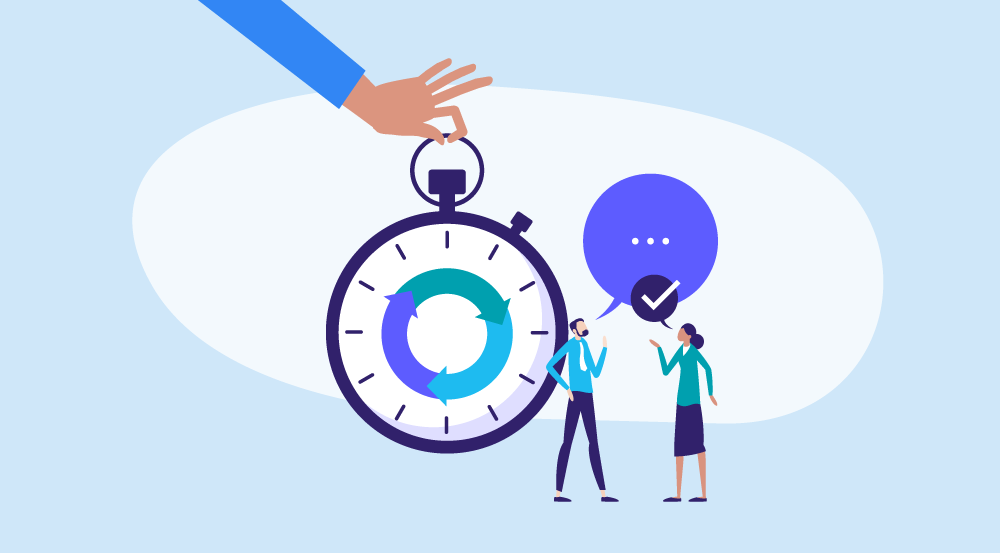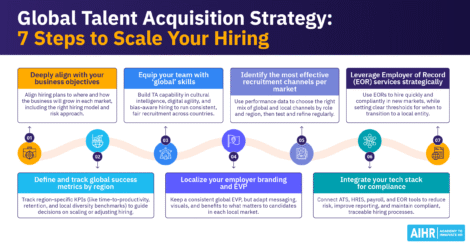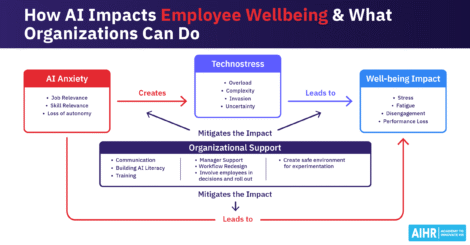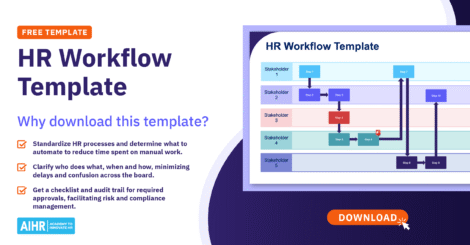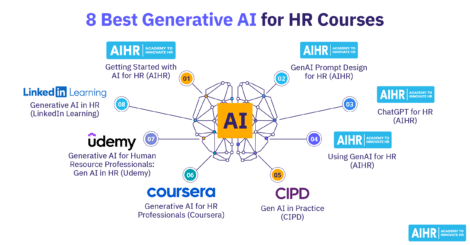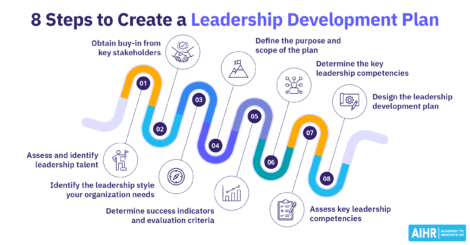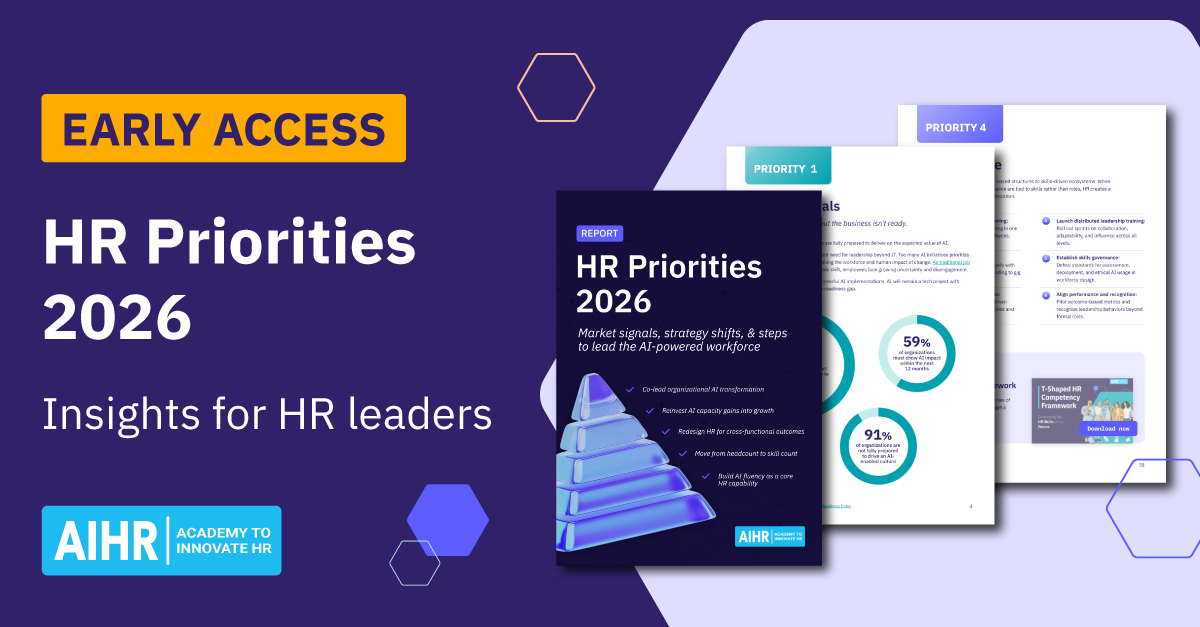A change management communication plan template is a practical tool for organizations facing rapid change. Inconsistent or unclear communication affects employee engagement and slows adoption, which can lead to change initiatives failing. Weak change communication also causes lower morale and productivity, higher attrition, and less discretionary effort.
Organizations that communicate clearly and consistently build trust, resilience, and adaptability, raising adoption rates. This article explains why such a change management communication plan matters and how to implement one. It also includes a free template to help you start communicating your plan to the rest of your organization.
Contents
Why a change management communication plan matters
Why use a change management communication plan template
Key elements of a change management communication plan template
Free change management communication plan template
10 steps to create a change management communication plan
How to apply AI efficiently to your template
Key takeaways
- Clear, consistent communication is critical to successful change; it boosts trust, engagement, and adoption.
- A structured plan with defined audiences, goals, messages, channels, and timelines prevents confusion and resistance.
- A template saves time, ensures consistency, and improves accountability across teams and projects.
- Ongoing measurement and feedback let you refine messages and channels, maintaining momentum until the change sticks.
Why a change management communication plan matters
A change management communication plan gives leaders a clear structure to explain the purpose of change, what it means for employees, and how leadership will support them. Delivered consistently, on time, and through the right channels, such communication can reduce resistance and show each employee how their role contributes to success.
Highly engaged teams see 14% higher productivity, 23% higher profitability, and lower turnover, but only 21% of employees worldwide are engaged. This indicates an urgent need for two-way feedback and regular updates to sustain momentum and alignment, as well as checkpoints to help track progress and course correction.
Why use a change management communication plan template
A template gives you a proven structure for guiding employees through change. Instead of starting from scratch, leaders and HR can focus on strategy, messaging, and engagement while relying on a solid foundation.
Benefits of using a template
- Saves time with a ready-to-use structure: Change moves fast. A template speeds setup so you can customize your plan without reinventing the basics.
- Covers all critical points: From the initial announcement and rationale to FAQs, updates, and feedback loops, a template helps ensure you cover everything.
- Provides consistency across teams and projects: A template’s shared structure minimizes mixed messages that cause confusion or mistrust.
- Supports customization for different audiences: Tailor content for executives, managers, and frontline staff so each group gets what matters to them.
- Improves accountability and tracking: Built-in owners and timelines make monitoring progress and adjusting on time easier.
- Builds organizational memory: Reuse and refine the structure to improve with each project.
Downsides of not using a template
- Reinventing the wheel: Every project takes longer and adds avoidable workload.
- Missed steps or channels: Skipping FAQs, feedback, or leader talking points fuels anxiety and resistance.
- Slower response to concerns: Without pre-planned guidance, leaders scramble for answers and lose credibility.
- Uneven communication quality: Inconsistent tone, timing, and content undermine trust and signal poor alignment.
- Higher risk of resistance and low adoption: Employees struggle to understand and support the change.
HR tip
Use change champions to amplify trust: Identify and empower informal leaders across the business to act as early adopters and message carriers. Employees often trust peers more than top-down announcements, making champions a powerful force for building confidence and accelerating adoption.
Key elements of a change management communication plan template
While the exact features of a change management communication plan template will vary depending on the organization and initiative, below are the elements that form the basis of an effective plan:
Executive summary
The executive summary is a strong introduction that builds trust and minimizes speculation. Set the stage by clearly explaining the change, why it’s happening, and how it connects to broader organizational goals. Employees need context to understand why this change matters, both for the business and for them personally.
Goals and objectives
Outlining objectives helps align everyone involved and provides a benchmark for measuring effectiveness later. Define the goals the communication plan should achieve. This can include raising awareness of the change, reducing uncertainty among staff, increasing adoption rates, or strengthening overall organizational trust.
Stakeholder mapping
Stakeholder mapping helps you create targeted, relevant messages. Identify the different groups affected by the change and map what each group needs to know and when they need to know it. For instance, executives may need strategic insights, while frontline employees may require practical guidance for day-to-day adjustments.
Key messages
Develop clear, consistent themes that explain the change in simple, relatable terms. Key messages should answer employees’ questions, like “What’s changing?” and “How will it impact me?” Be sure to tailor each message’s tone and level of detail for different audiences, while aligning the core message across the organization.
A solid change management plan is just the first step. To get the entire organization on the same page, you must align different departments, tailor messages by audience, and measure and iterate based on feedback until adoption sticks.
With AIHR for Business, your team will learn to:
✅Use essential tools to help guide your organization through different initiatives
✅Master data analytics, execution frameworks, and agile methodologies
✅Access best-in-class business solutions to train and support your HR team
🎯 Don’t just plan change management — communicate it effectively.
Communication channels
Outline which channels you’ll use to deliver messages, what every channel’s purpose is, and who’s responsible for each one. For instance, senior executives may use emails and intranet posts to announce the plan’s vision, or HR may organize town halls to facilitate interaction between staff and leadership. The right channels can increase reach and understanding.
Feedback and measurement
Feedback loops show that communication is a two-way process. List the mechanisms you’ll use for gathering employee input and gauging staff sentiment, such as employee feedback surveys, Q&A sessions, and feedback forms. Measurement could include tracking adoption rates, employee sentiment, or participation in change-related activities.
Support resources
Making support readily available reduces uncertainty and shows employees that the organization is invested in helping them succeed. On the template, you can include resources such as FAQs, toolkits, training sessions, or a central knowledge hub, as well as each resource’s purpose (e.g., FAQs can answer common questions and reduce uncertainty).
Risk management and contingency planning
Anticipate possible communication challenges like misinformation, resistance, or technology gaps, and plan how you’ll address them. This helps maintain confidence when unexpected issues occur and ensures the organization can respond quickly. On the template, list the challenges you’re likely to encounter and provide a solution for each one.
Free change management communication plan template
To help you put these principles into practice, AIHR has created a free, customizable change management communication plan template. This template gives you a ready-made structure to plan, track, and deliver every stage of your communication with employees during organizational change.
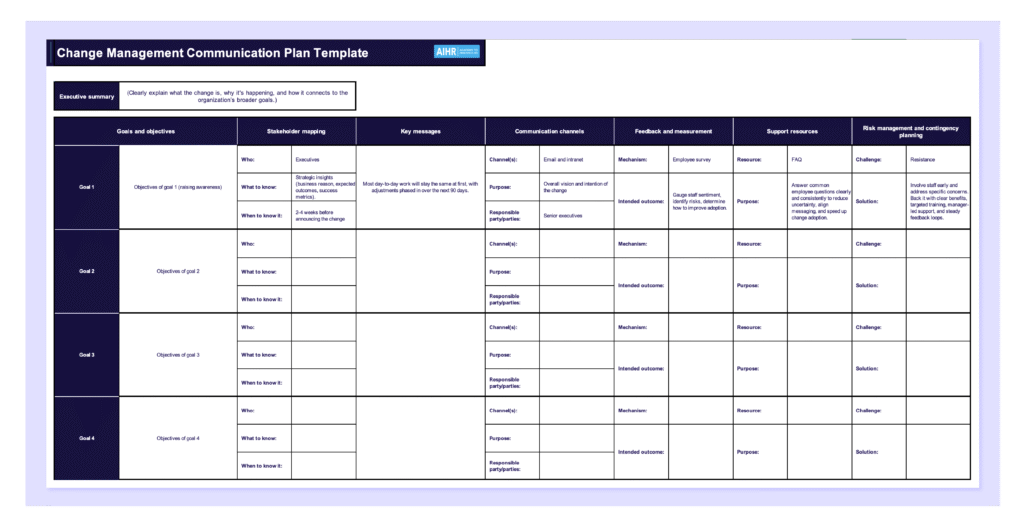
Still in the beginning stages of developing a change management plan? AIHR also has a free change management plan template, designed to guide you through every step of the process and provide you with a clear structure you can adapt to suit your organization’s needs and goals.
10 steps to create a change management communication plan
Here are 10 steps that will give you and your team a clear roadmap to design and deliver a communication plan that keeps employees informed, engaged, and supported throughout the change journey.
Step 1: Define the change
Write a plain-language summary of what is changing, why now, and what success looks like. Link the change to company strategy and measurable outcomes, and spell out scope, benefits, risks, and the impact on people, processes, systems, and customers. Close with a simple “from–to” statement so that everyone can see the shift at a glance.
Step 2: Identify stakeholders
List all groups affected — executives, managers, frontline teams, customers, partners, and support functions, and note their concerns, influence, and preferred channels. Segment by impact level (high, medium, low) and define what each group needs to know, when, and in how much detail. This prevents generic messages and keeps communications relevant.
Step 3: Set communication goals
Decide what you want people to know, feel, and do at each stage. Examples include 90% awareness before kickoff, 70% employee training completion before go-live, or a target reduction in resistance signals (e.g., support tickets or negative sentiment). Tie goals to business outcomes like adoption rates, time to proficiency, or customer satisfaction.
Step 4: Create key messages
Draft three to give core talking points that cover the reason for change, benefits, impacts, support available, and the call to action (CTA). Keep wording simple and concrete, and build audience versions that address “what’s in it for me” for leaders, managers, and employees. Be sure to keep the core story identical to avoid mixed messages.
Step 5: Choose channels and tools
Match the message to the medium — email for broad updates, town halls for context and Q&A, manager toolkits for team talks, the intranet for reference, chat for reminders, and short videos for complex topics. Provide one-to-many and two-way options, so people can ask questions instead of just receiving information.
Step 6: Prepare supporting resources
Create practical materials that help people act, such as FAQs, timelines, training guides, job aids, demo videos, and change impact summaries by role. Additionally, be sure to provide manager scripts and slides for team meetings. Store everything in a single, easy-to-find hub and ensure employees always see the latest versions in order to avoid confusion.
Step 7: Develop a timeline
Lay out communications by phase, i.e., pre-announce, announce, prepare, go-live, and stabilize. Set dates for each message, who is responsible for sending it, and the trigger (e.g., training opens, system cutover). Stagger reminders and feedback points, and use a visible calendar to help avoid gaps, rushes, and message overload.
Step 8: Assign responsibilities
Define owners for every task. For instance, executives set vision and urgency, HR and change leads manage content, training, and measurement, and functional leaders translate impacts. Managers deliver team conversations and collect questions, while comms teams handle format and channel execution. Document backups so nothing slips if someone is out.
Step 9: Launch the plan
Start with a clear executive announcement that explains the why, what, when, and support available. Follow with manager-led discussions, detailed how-to updates, and training invites. At the same time, use varied formats and repeat key points, and track reach (opens, attendance) and questions to spot where more clarity is needed.
Step 10: Monitor and adjust
Measure understanding, sentiment, and behavior through survey results, Q&A themes, training completion, adoption metrics, help-desk tickets, and change readiness checkpoints. Share insights with leaders weekly, address misconceptions fast, and refine messages, channels, or timing based on what the data shows. Keep iterating until the change sticks.
HR tip
Link communication metrics to business outcomes: Don’t stop at measuring open rates or attendance. Track whether communication actually shifts behaviors — are adoption rates improving? Is productivity stable during transition? Showing the direct link between communication and outcomes strengthens HR’s strategic credibility.
How to apply AI efficiently to your template
Many HR teams struggle to keep communication clear, consistent, and timely during periods of change. Generative AI in HR offers an opportunity to reduce the workload, speed up content creation, and keep messages aligned with the overall change management framework. Here are some practical ways to use AI effectively with your template:
Draft key messages quickly
Use a generative AI tool (like ChatGPT) to create first drafts of announcements, FAQs, and talking points. Instead of starting from scratch, feed your objectives and audience details into AI to generate content you can then refine.
→ Do this: Ask AI to draft three versions of a key announcement, then choose the one that best matches your organization’s tone, and edit it for clarity.
Tailor communication for different audiences
Not all employees need the same level of detail. Use AI to adapt a core message into multiple versions (e.g., one for executives, one for managers, and one for frontline staff) while maintaining consistency in tone and content.
→ Do this: Input your base message into AI and request tailored summaries, like a one-page manager brief or a short, plain-language update for frontline staff.
Generate FAQs and anticipate questions
Employees often share the same concerns during change. AI can analyze your key messages and generate a list of likely questions, helping you prepare responses before these questions arise.
→ Do this: After drafting your communication, ask AI, “What questions might employees ask about this change?” and use the results to build a proactive list of FAQs.
Create multi-channel content
A template outlines which channels to use, but AI can help format the same message for each one. This is useful since the language you use in an intranet post may differ from what you use in a town hall script or email.
→ Do this: Paste your message into AI and ask it to rewrite for three formats — a formal email, a short intranet article, and a conversational script for a manager to use in a team meeting.
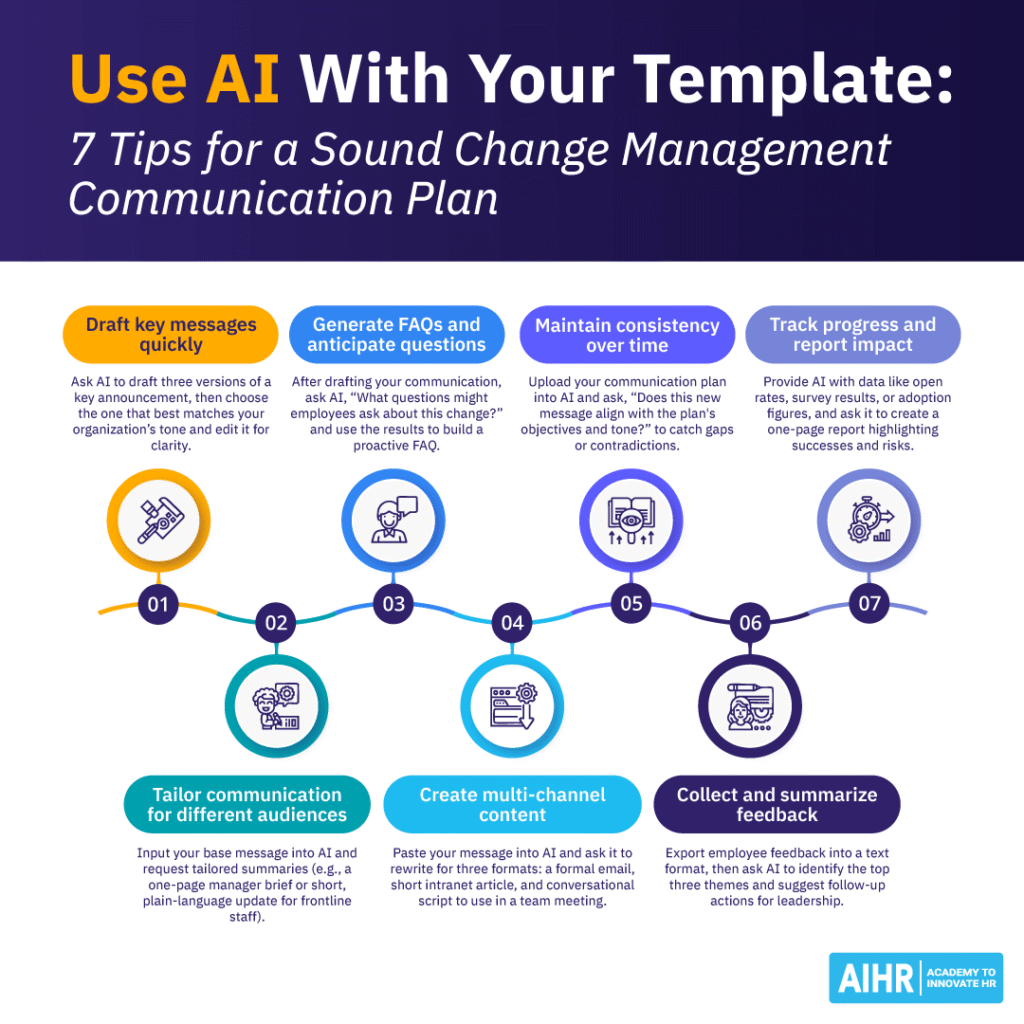
Maintain consistency over time
Communication can become inconsistent during long change programs. AI can help you maintain consistency by comparing new drafts with earlier messages to ensure alignment with your framework.
→ Do this: Upload your core communication plan into AI and ask, “Does this new message align with the objectives and tone of the plan?” to spot gaps or contradictions.
Collect and summarize feedback
A strong template includes feedback loops, but analyzing responses manually can be time-consuming. AI can review employee surveys, emails, or Q&A inputs and provide concise summaries of sentiment and recurring themes.
→ Do this: Export employee feedback into a text format, then ask AI to identify the top three themes and suggest follow-up actions for leadership.
Track progress and report Impact
AI can help turn raw HR communication metrics into meaningful insights for leadership. By analyzing engagement data, adoption rates, or employee sentiment trends, you can use concrete data to determine whether the plan is working.
→ Do this: Provide AI with data like open rates, survey results, or adoption figures, and ask it to create a one-page report highlighting successes and risks.
Conclusion
A well-structured change management communication plan enables trust and adoption, reduces resistance, and ensures employees understand the change’s purpose and their role in making it successful. Aligning leaders, managers, and staff also allows the company to avoid confusion, disengagement, and stalled adoption.
Using a change management communication plan template makes the process more efficient by covering all critical areas while allowing customization for different audiences and contexts. With a strong plan supported by a reliable template, change management communication becomes a driver of success, not a barrier to it.


